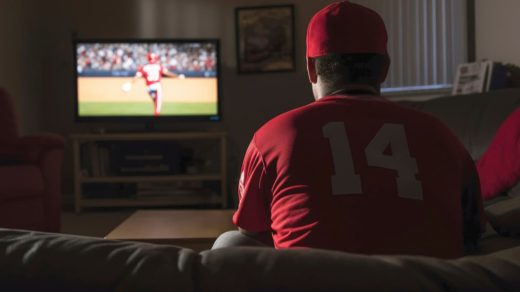You’re watching the Olympics, marveling at those impossibly fit athletes, and thinking, “Man, I wish I had their discipline… and their abs.”
Then reality hits. You’ve got a 9-to-5, kids to feed, Netflix shows to binge, and let’s be honest—the closest you’ve come to an athletic training regimen is sprinting to catch the elevator.
But here’s the thing that might surprise you: you don’t need to live like a professional athlete to get fit like one. You just need to think like one.
I’ve been down this rabbit hole myself, studying what makes elite athletes so consistently strong, fast, and resilient.
And the best part? Most of their secrets aren’t about grinding through brutal 6-hour training sessions or surviving on nothing but chicken breast and kale smoothies. They’re about being smarter, not harder.
How to Stay Fit Like an Athlete Without Going Pro?

So grab your favorite beverage (yes, coffee counts as pre-workout), and let’s dive into how you can steal the best habits from the athletic world without needing a personal trainer, nutritionist, or trust fund.
The Athlete Mindset: It’s Not What You Think
First things first—let’s bust a myth. Athletes aren’t superhuman. They’re not genetically programmed to love burpees or crave quinoa salads.
What sets them apart is their approach to fitness as a lifestyle, not a quick fix.
Think of it this way: athletes don’t “go on diets”—they fuel their bodies. They don’t “find time” to work out—they schedule recovery like it’s a board meeting.
They don’t rely on motivation—they build systems that work even when they’d rather be binge-watching true crime documentaries.
This shift in thinking is your first step toward athletic-level fitness. You’re not trying to squeeze workouts into your life; you’re designing a life that naturally includes movement, recovery, and proper fuel.
Recovery: The Secret Weapon You’re Probably Ignoring
Here’s something that’ll blow your mind: elite athletes often spend more time recovering than they do training. While you’re beating yourself up for taking rest days, they’re scheduling them like sacred appointments.
The Athletic Recovery Approach:
- Sleep like your life depends on it: Athletes aim for 7-9 hours of quality sleep. Your body repairs muscle, balances hormones, and performs magic while you’re unconscious. Make your bedroom a sleep sanctuary—dark, cool, and phone-free.
- Active recovery days: Instead of going from hero to zero, try gentle yoga, a leisurely walk, or some light stretching on your “off” days. Your muscles will thank you, and you’ll maintain momentum without burning out.
- Listen to your body: Feeling unusually tired? Joints a bit achy? That’s your body asking for a breather, not weakness. Athletes adjust their training based on how they feel, and you should too.
Real-life hack: Set a “recovery reminder” on your phone. When it goes off, do a 2-minute body scan. Tight shoulders? Roll them out. Stiff back? Do some gentle stretches. It takes less time than scrolling Instagram and pays way better dividends.
Consistency: The Unglamorous Game-Changer
Athletes aren’t successful because they have perfect workouts every single day. They’re successful because they show up consistently, even when it’s messy, abbreviated, or far from ideal.
The 15-Minute Rule: This is pure gold from the athletic world. Can’t do your full workout? Do 15 minutes. Traveling? 15 minutes of bodyweight exercises in your hotel room. Crazy day at work? 15 minutes of walking during lunch. The goal isn’t perfection—it’s maintaining the habit.
Weekly Movement Menu: Instead of rigid daily schedules, think like a professional athlete with a weekly training plan:
- 2-3 strength sessions (even 20 minutes counts)
- 2-3 cardio sessions (dancing in your kitchen counts)
- 1-2 recovery/mobility sessions
- Daily movement snacks (take the stairs, park farther away, have walking meetings)
The “Good Enough” Philosophy: Athletes know that a mediocre workout done consistently beats a perfect workout done sporadically. Your 20-minute living room circuit on a busy Tuesday is infinitely better than the hour-long gym session you keep planning but never execute.
Nutrition: Fuel, Not Punishment
Professional athletes don’t have a complicated relationship with food—they view it as fuel for performance and recovery. No guilt, no “cheat days,” just consistent nourishment.
The Athlete’s Plate Formula:
- Half your plate: Colorful vegetables and fruits
- Quarter of your plate: Lean protein (chicken, fish, beans, tofu)
- Quarter of your plate: Complex carbs (quinoa, sweet potatoes, brown rice)
- A thumb-sized portion: Healthy fats (avocado, nuts, olive oil)
Hydration Game: Athletes start hydrating the moment they wake up. Keep a water bottle visible and aim to refill it 2-3 times throughout the day. Feeling sluggish at 3 PM? Try water before caffeine—dehydration often masquerades as fatigue.
Prep Like a Pro: Athletes don’t rely on willpower when they’re hungry and tired. Spend 20 minutes on Sunday washing fruit, chopping vegetables, or portioning snacks. Your future hangry self will worship your past self’s preparation.
Sleep: Your Secret Performance Enhancer
While you’re downloading the latest fitness app, athletes are optimizing their sleep like it’s an Olympic event. Because honestly? Good sleep might be the closest thing we have to a legal performance-enhancing drug.
The Athletic Sleep Protocol:
- Set a bedtime: Yes, like when you were seven. Athletes go to bed at roughly the same time every night to regulate their circadian rhythm.
- Create a wind-down routine: 30 minutes before bed, dim the lights, put away screens, and do something calming. Read, stretch, meditate, or plan tomorrow’s outfit.
- Cool and dark: Athletes keep their bedrooms around 65-68°F and invest in blackout curtains or a sleep mask.
The Power Nap: If you can swing it, a 20-minute power nap between 1-3 PM can boost performance and recovery. Athletes swear by them, and science backs it up.
Simple Workouts That Pack an Athletic Punch
You don’t need a fully equipped gym to train like an athlete. Here are some go-to routines that deliver maximum impact with minimal equipment:
The “Living Room Champion” Workout (15-20 minutes)
Warm-up (3 minutes):
- 30 seconds each: arm circles, leg swings, gentle jumping jacks, torso twists
Main Set (12 minutes): Do each exercise for 45 seconds, rest 15 seconds, repeat the circuit 3 times:
- Bodyweight squats
- Push-ups (modify on knees if needed)
- Mountain climbers
- Plank hold
Cool-down (3 minutes): Gentle stretching, focusing on anything that feels tight
The “Athlete’s Travel Special” (10 minutes)
Perfect for hotel rooms, small spaces, or when you’re short on time:
- 2 minutes: Walk in place with high knees
- 2 minutes: Wall sits
- 2 minutes: Push-ups
- 2 minutes: Lunges
- 2 minutes: Gentle stretching
The “Weekend Warrior” Session (30-45 minutes)
For when you have a bit more time and want to feel like a champion:
- 5-minute walk or light jog
- 20-30 minutes: Mix of strength exercises (squats, lunges, push-ups, planks) with short cardio bursts (jumping jacks, high knees)
- 10-15 minutes: Yoga flow or stretching
Balancing Fitness with Real Life
Let’s talk about the elephant in the room: you’re not a professional athlete. You have a job, maybe kids, social obligations, and a life that doesn’t revolve around training schedules. Here’s how to make it work:
The Multitasking Approach:
- Walk meetings: Take phone calls while walking
- Exercise with family: Go for hikes, play at the park, have dance parties in the living room
- Commute creatively: Bike to work, take the stairs, park farther away
The “Time Block” Strategy: Athletes schedule everything, including fitness. Look at your week and identify three 20-30 minute windows where you can consistently move your body. Monday 6 AM, Wednesday lunch break, Friday evening—whatever works for YOUR life.
The Social Support System: Athletes have teammates. Find your squad—whether it’s a workout buddy, a family member who joins your evening walks, or an online community that celebrates small wins. Accountability doesn’t have to be intimidating; it can be encouraging.
Mindset: Think Like a Champion
The biggest difference between athletes and everyone else isn’t physical—it’s mental. Athletes have trained themselves to see obstacles as opportunities and setbacks as data, not failures.
- The “Progress, Not Perfection” Mentality: Athletes track progress in tiny increments. Celebrate doing one more push-up than last week, walking an extra block, or choosing the salad over fries. Small wins compound into big transformations.
- The “Systems Over Goals” Approach: Instead of focusing solely on outcomes (lose 20 pounds, run a marathon), athletes focus on systems (meal prep on Sundays, move for 20 minutes daily, go to bed by 10 PM). Consistent systems create inevitable results.
- The “Bounce-Back Factor”: Athletes expect setbacks and have plans for them. Missed a week of workouts due to a work deadline? No problem—you’re not starting over, you’re continuing. One bad meal doesn’t ruin a day, and one bad day doesn’t ruin a week.
As per Matchtimeline.com, staying fit doesn’t mean living like a pro athlete—it means training smart and staying consistent.
Your Athletic Life Starts Now
Here’s the truth: you already have everything you need to start training like an athlete.
You don’t need special equipment, expensive supplements, or a complete life overhaul. You just need to start where you are, with what you have, and build from there.
Remember, professional athletes didn’t become fit overnight. They built habits, systems, and mindsets that supported their goals day after day, year after year.
The only difference between their journey and yours is that they get paid to prioritize fitness, but that doesn’t mean your journey is any less valuable or achievable.
Start small. Be consistent. Celebrate progress. And most importantly, remember that the goal isn’t to become a professional athlete—it’s to become the healthiest, strongest, most energetic version of yourself.
Your athletic journey doesn’t require a starting line, a finish line, or a medal ceremony. It just requires you to begin.
Now, lace up those sneakers (or stay in your pajamas—home workouts count too), and let’s show the world what everyday athletes look like. Spoiler alert: they look exactly like you, just moving a little more and sleeping a little better.
Game on, champion. 🏆



